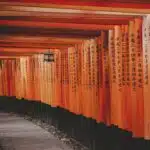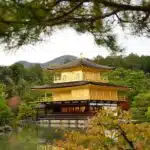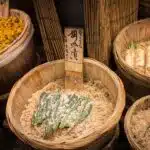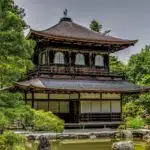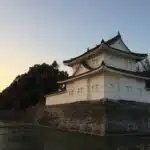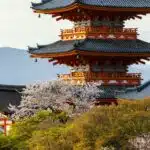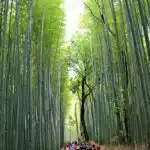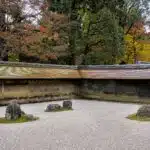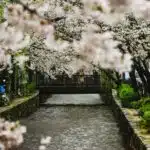Kyoto Imperial Palace (Kyoto Gosho) was the residence of Japan’s Imperial family until the capital was moved to Tokyo in 1868. Located in a large, serene park in the heart of Kyoto, the palace is a historical treasure that showcases traditional Japanese architecture, beautiful gardens, and the cultural significance of the Imperial Court.
The palace complex includes a series of elegant buildings, such as the Shishinden (Hall for State Ceremonies), Seiryoden (Emperor’s Residence), and Oikeniwa Garden, surrounded by tree-lined paths, making it a peaceful spot for a walk.
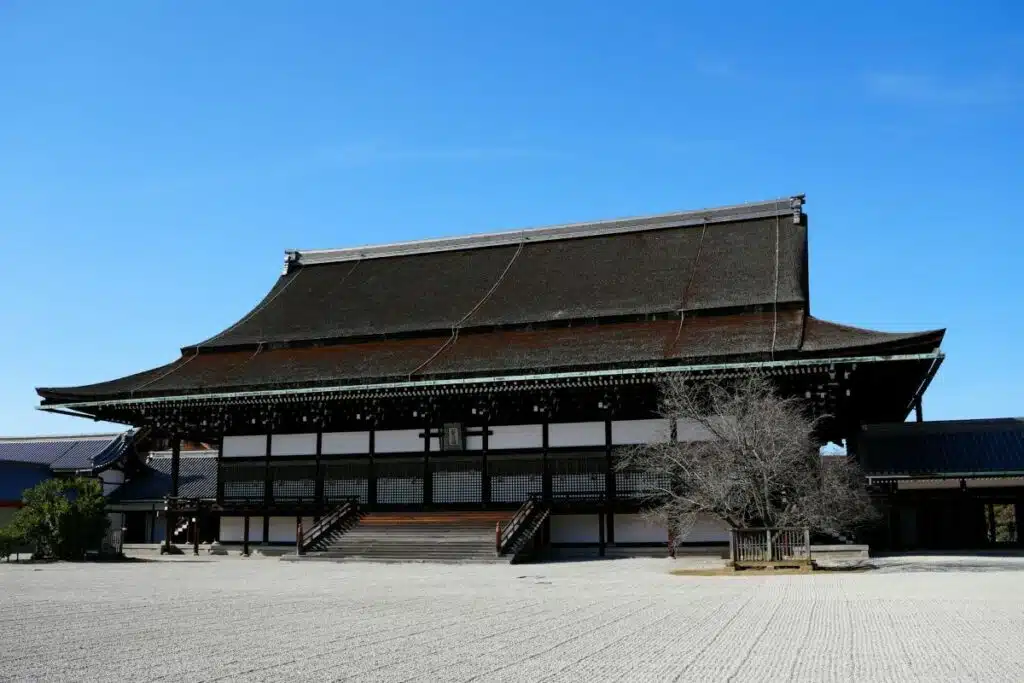
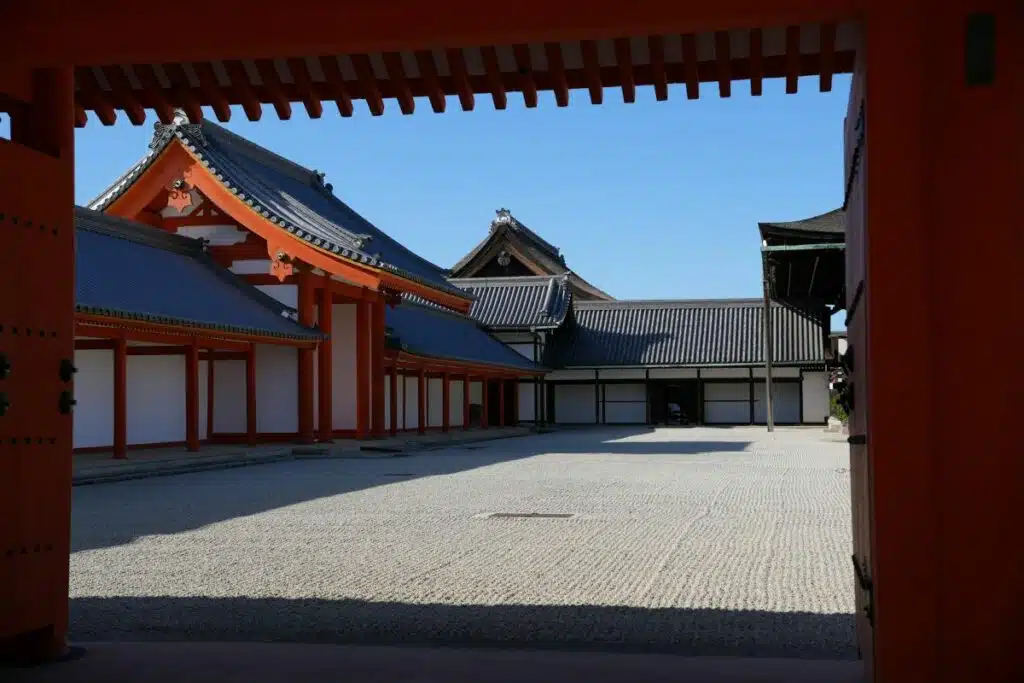
What to See at Kyoto Imperial Palace
- Shishinden (Hall of State Ceremonies): The most important building in the palace, the Shishinden is where enthronement ceremonies and other significant events took place. The grand structure, with its open hall and iconic raised platform, is the highlight of the visit.
- Seiryoden: Once the Emperor’s private residence, the Seiryoden offers a glimpse into the living quarters of Japan’s royalty, featuring elegant sliding doors and beautiful garden views.
- Oikeniwa Garden: The palace grounds feature stunning gardens, particularly Oikeniwa, a Japanese strolling garden with a large pond, stone bridges, and meticulously maintained plants. It’s a serene place to walk and relax.
- Kenreimon Gate: This large, imposing gate serves as the main entrance to the palace and reflects the grandeur of Imperial architecture. It’s a great spot for photos, particularly during seasonal events.
- Sakiko no Matsu (Old Pine Tree): A famous pine tree within the palace grounds that has been standing for centuries. It’s revered for its unique shape and impressive age, adding to the historical ambiance of the palace.
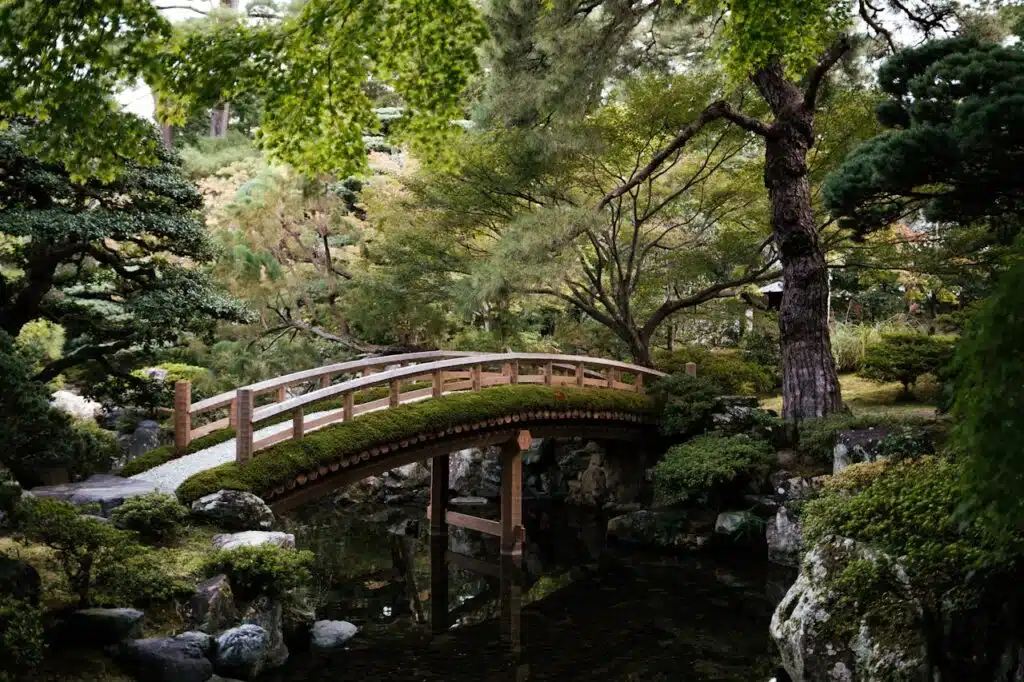
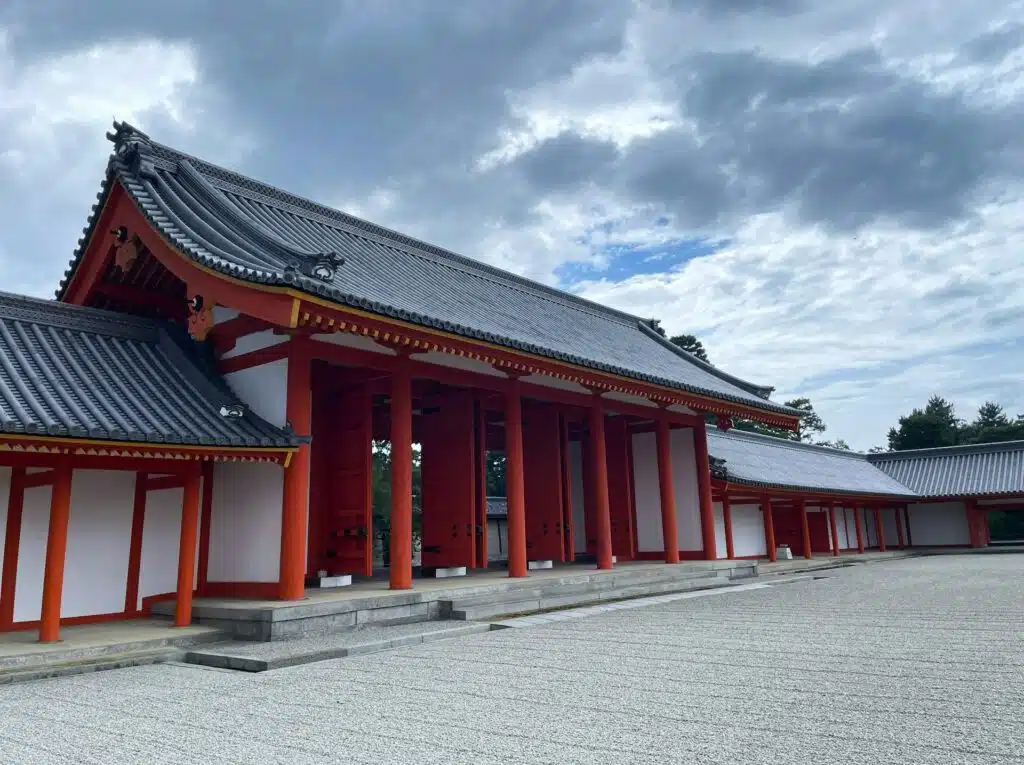
Tips for Visiting Kyoto Imperial Palace
- Free Admission: Kyoto Imperial Palace is free to enter, but guided tours in English are highly recommended for a deeper understanding of the site’s history. Tours are organized by the Imperial Household Agency, and prior registration can be done online or at the onsite office.
- Best Time to Visit: The palace is beautiful year-round, but it’s particularly stunning during cherry blossom season in spring and autumn when the leaves change color. These seasons also attract the largest crowds, so visiting early in the morning is advisable.
- Stroll the Park: The palace is set within the expansive Kyoto Gyoen National Garden, which is perfect for a leisurely walk or picnic. The garden is accessible year-round and is especially beautiful during the cherry blossom and fall foliage seasons.
- No Interior Access: Visitors cannot enter the interiors of the palace buildings, but the exterior views are impressive enough to make it worth the visit. The guided tours provide excellent context about the buildings and Imperial ceremonies.
- Photography: Photography is allowed outside the palace buildings and in the gardens. However, be respectful of the palace’s historic nature and avoid intrusive photography.
- Combine with Nearby Attractions: The palace is located near Nijo Castle and Kinkaku-ji (Golden Pavilion), making it easy to combine these sites for a full day of exploring Kyoto’s rich heritage.
- Accessibility: The palace grounds are mostly flat and accessible to those with mobility challenges, with well-maintained paths suitable for wheelchairs and strollers.
- Plan Ahead: While the palace is open to the public, if you’re interested in the guided tours, it’s best to book in advance, particularly during peak tourist seasons. There are also occasional closures for Imperial events, so checking the schedule is recommended.
- Cultural Events: From time to time, cultural events and Imperial ceremonies are held at the palace, which can enhance your visit. Check the schedule beforehand to see if any special events coincide with your trip.
Getting There
Kyoto Imperial Palace is easily accessible via subway, located near Imadegawa Station on the Karasuma Line. The palace is also a short bus ride from Kyoto Station.
Why Visit Kyoto Imperial Palace?
Kyoto Imperial Palace is a symbol of Japan’s historical and cultural heritage, offering visitors a chance to step into the world of Japan’s ancient Imperial Court. With its grand architecture, serene gardens, and deep historical significance, the palace is a must-visit for anyone interested in Japan’s royal past and traditional aesthetics.

